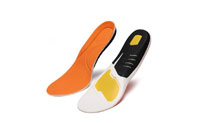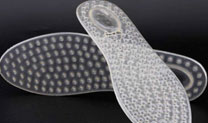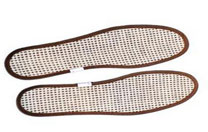Most of the common insoles on the market use a solid structure, which uses the physical properties of materials such as EVA itself to cushion the shock. However, limited by the properties of the material itself, there is a compression limit and a rebound limit that does not respond quickly to the impact force of the feet. And after a period of use, the material ages and collapses, which does not act as a shock absorber; The insoles are less breathable and tend to cause sweat on the soles of users' feet.
Felt, a common industrial tool, is mostly made of wool. It is also made of cow hair or fiber and glued by processing. The main features are high resilience, shockproof, breathability, and Warmth. Foam has advantages of excellent elasticity, lightweight, fast pressure-sensitive fixing, convenient usage, free bending, ultra-thin volume, and excellent breathability. As a result, many people combine their felts and foam by pressing them into one piece after heating, cutting and using them as warm insoles for boots.
Thermal bonding is the process of heating between the two items, applying pressure and thermal bonding. The heating temperature is 165-175°C and the heating time is 120 seconds. With this combination of heating and pressing, when the foam is pressed at a high temperature, its surface stability, breathability, and resilience will be damaged, thus affecting the effectiveness of the insole.
Dongguan Zhiguo has warm insoles for boots for sale. Welcome to learn more.



